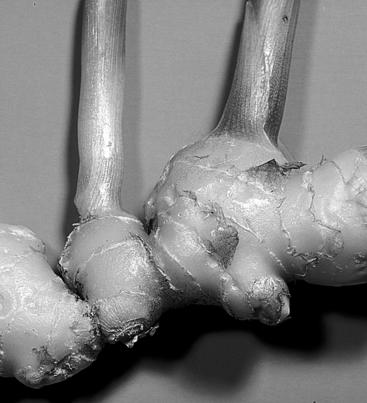GINGER
Botanical name: Zingiber officinalis
PRINCIPAL USES
• Antiemetic and antianorectic for nausea and appetite loss associated with cancer and HIV chemotherapeutic treatments
MECHANISMS OF ACTION
The aromatic principles of ginger are considered responsible for its medicinal actions, including enzymatic inhibition of prostaglandin, thromboxane, and leukotriene synthesis. The mechanisms of action on nausea and vomiting remain uncertain, with studies demonstrating increased gastric motility contradictory to those showing no motility. Another theory is that the herb acts via a centrally mediated effect on 5-hydroxytryptamine-3 (5-HT3), an effect that has been demonstrated in vitro. There is some evidence that ginger increases stomach acid production, thus possibly interfering with antacid medications.
Only gold members can continue reading. Log In or Register to continue




